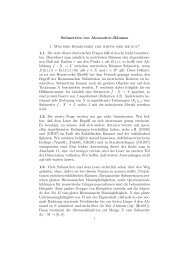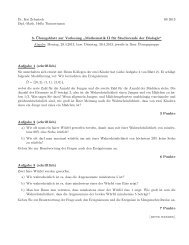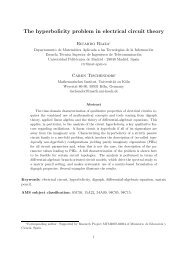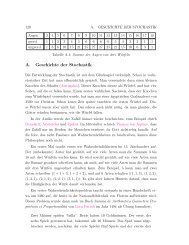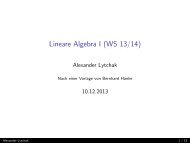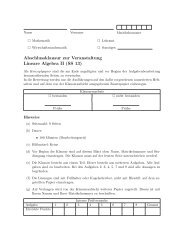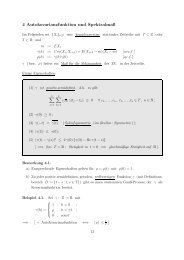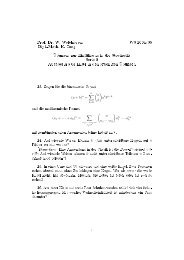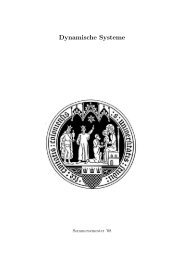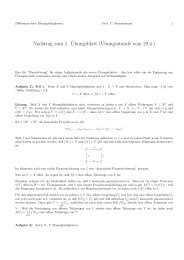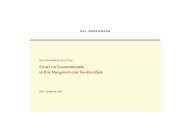Inhaltsverzeichnis - Mathematisches Institut der Universität zu Köln
Inhaltsverzeichnis - Mathematisches Institut der Universität zu Köln
Inhaltsverzeichnis - Mathematisches Institut der Universität zu Köln
Create successful ePaper yourself
Turn your PDF publications into a flip-book with our unique Google optimized e-Paper software.
DMV Tagung 2011 - <strong>Köln</strong>, 19. - 22. September<br />
Florian Boßmann<br />
<strong>Universität</strong> Göttingen<br />
Model based image pattern recognition in ultrasonic non destructive testing<br />
Ultrasonic non destructive testing methods have achieved rapidly gaining prominence as reli-able<br />
techniques for tube inspection. Its use as inspection tool brings into light the challenge of developing<br />
fast and reliable data processing methods in or<strong>der</strong> to be able to characterize flaws in the material. In<br />
particular, the determination of precise positions and dimensions of flaws is a complicated task due to<br />
the huge amount of data. Moreover, the obtained data contains strong noise caused e.g. by (multiple)<br />
reflections from mode converted signals.<br />
In our group a new simplified physical model for the problem of tube inspection by ultrasound waves has<br />
been developed. Using this model we are able to solve the inverse problem of defect reconstruction in<br />
two steps. In particular, we use the sparsity of this problem: Normally the number and size of defects<br />
will be small compared to the tube size. This means only a small number of reflections generates the<br />
measured data. In a first step we compute the position and amplitude of those reflections by solving a<br />
sparse representation problem. Taking this information we can solve the inverse problem of our model.<br />
In this talk, the model and some basic ideas of its inversion will be summarized. First numerical results<br />
can be shown. This is joined work with my supervisor Gerlind Plonka-Hoch (Göttingen).<br />
Brigitte Forster<br />
Technische <strong>Universität</strong> München<br />
Interpolation with fundamental splines of fractional or<strong>der</strong><br />
Fractional B-splines Bσ , σ ≥ 1, are piecewise polynomials of fractional degree that interpolate the<br />
classical Schoenberg splines Bn, n ∈ N, with respect to the degree. As the Schoenberg splines of or<strong>der</strong><br />
≥ 3, they in general do not satisfy the interpolation property Bσ(n − k) = δn,k, n,k ∈ Z. However, the<br />
application of the interpolation filter 1/∑k∈Z �Bσ(ω − 2πk)—if well-defined—in the frequency domain<br />
yields a fundamental spline of fractional or<strong>der</strong> that does satisfy the interpolation property. We handle the<br />
ambiguity of the complex exponential function appearing in the denominator of the interpolation filter, and<br />
relate the filter to interesting properties of the Hurwitz zeta function. Finally, we show that the fundamental<br />
splines of fractional or<strong>der</strong> fits into the setting of Kramer’s Lemma and allows for a family of sampling,<br />
resp., interpolation series. This is joint work with Peter Massopust, Helmholtz Zentrum München.<br />
112




